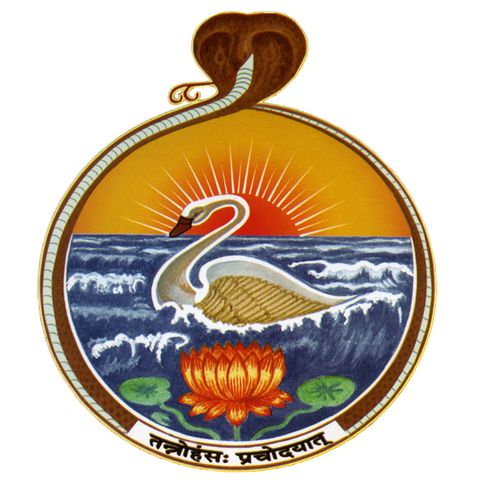
Contacts
Info
Swami Tattwamayananda’s exposition of Patanjali's Yoga Sutras was given at the Vedanta Society of Northern California, San Francisco (founded by Swami Vivekananda in 1900) from October 10, 2014 to December...
show morePatanjali was a great Indian sage who wrote major treatises on Ayurveda, Sanskrit grammar and Yoga. The Yoga Sutras of Patanjali contain 195 sutras organized into four chapters. It gives a complete analysis of the mental system, how to transcend mental conflicts by linking the mind to a transcendental spiritual reality and how to become established in our true nature.
The classes are given from the viewpoint of Vedanta, one of the oldest philosophies of the world, which constitute the universal spiritual essence of the Vedas, the foundational scriptures of Hinduism. During the exposition, the Swami has drawn extensively from authentic Sanskrit commentaries and interpretative works like ‘Yoga-Bhasya’ of Vyasa, ‘Tattwa-Vaisharadi” of Vachaspati Mishra, ‘Yoga-Varttika’ of Vijnana Bhikshu, ‘Raja-Martanda’ of Bhoja Raja, ‘Yoga-Sudhakara’ of Sadashivendra Saraswati, with occasional references from ‘Yoga-Maniprabha’ of Ramananda Yati, ‘Patanjala-Yogashastra-Vivarana’ of Sri Shankara, and interpretations of Yoga-aphorisms by Swami Vivekananda and Swami Hariharananda Aranya.
“By the Vedas no books are meant. They mean the accumulated treasury of spiritual laws discovered by different persons in different times.” “The moral, ethical, and spiritual relations between soul and soul and between individual spirits and the Father of all spirits, were there before their discovery, and would remain even if we forgot them." (Paper on Hinduism, Swami Vivekananda, World's Parliament of Religions 1893)
According to this series of classes, the Yoga system of Patanjali reaches its ultimate fulfillment in the conclusions of Vedanta, that there is one all-pervading, immanent, eternal spiritual reality, which is our own true nature.
In the original text of Patanjali the order is 1. Samadhipada 2. Sadhanapada 3. Vibhutipada 4. Kaivalyapada. But in this exposition of the Yoga-sutra the speaker has followed a different order, which seems to be more logical from the standpoint of actual Yoga-sadhana, i.e., 1. Sadhanapada 2. Vibhutipada 3. Samadhipada 4. Kaivalyapada. To help beginners in the study of Yoga philosophy, the basic definitions from the first few aphorisms of Samadhipada are explained at the beginning.
For more:
Web: www.sfvedanta.org
Livestream: https://livestream.com/sfvedanta
Facebook: www.facebook.com/sfvedanta
YouTube: https://www.youtube.com/user/SFVedanta
All Original Content © Vedanta Society of Northern California

Yoga Sutras and the World of the Human Mind
Yoga Sutras and the World of the Human Mind
Vedanta Society, San FranciscoSwami Tattwamayananda’s exposition of Patanjali's Yoga Sutras was given at the Vedanta Society of Northern California, San Francisco (founded by Swami Vivekananda in 1900) from October 10, 2014 to December...
show morePatanjali was a great Indian sage who wrote major treatises on Ayurveda, Sanskrit grammar and Yoga. The Yoga Sutras of Patanjali contain 195 sutras organized into four chapters. It gives a complete analysis of the mental system, how to transcend mental conflicts by linking the mind to a transcendental spiritual reality and how to become established in our true nature.
The classes are given from the viewpoint of Vedanta, one of the oldest philosophies of the world, which constitute the universal spiritual essence of the Vedas, the foundational scriptures of Hinduism. During the exposition, the Swami has drawn extensively from authentic Sanskrit commentaries and interpretative works like ‘Yoga-Bhasya’ of Vyasa, ‘Tattwa-Vaisharadi” of Vachaspati Mishra, ‘Yoga-Varttika’ of Vijnana Bhikshu, ‘Raja-Martanda’ of Bhoja Raja, ‘Yoga-Sudhakara’ of Sadashivendra Saraswati, with occasional references from ‘Yoga-Maniprabha’ of Ramananda Yati, ‘Patanjala-Yogashastra-Vivarana’ of Sri Shankara, and interpretations of Yoga-aphorisms by Swami Vivekananda and Swami Hariharananda Aranya.
“By the Vedas no books are meant. They mean the accumulated treasury of spiritual laws discovered by different persons in different times.” “The moral, ethical, and spiritual relations between soul and soul and between individual spirits and the Father of all spirits, were there before their discovery, and would remain even if we forgot them." (Paper on Hinduism, Swami Vivekananda, World's Parliament of Religions 1893)
According to this series of classes, the Yoga system of Patanjali reaches its ultimate fulfillment in the conclusions of Vedanta, that there is one all-pervading, immanent, eternal spiritual reality, which is our own true nature.
In the original text of Patanjali the order is 1. Samadhipada 2. Sadhanapada 3. Vibhutipada 4. Kaivalyapada. But in this exposition of the Yoga-sutra the speaker has followed a different order, which seems to be more logical from the standpoint of actual Yoga-sadhana, i.e., 1. Sadhanapada 2. Vibhutipada 3. Samadhipada 4. Kaivalyapada. To help beginners in the study of Yoga philosophy, the basic definitions from the first few aphorisms of Samadhipada are explained at the beginning.
For more:
Web: www.sfvedanta.org
Livestream: https://livestream.com/sfvedanta
Facebook: www.facebook.com/sfvedanta
YouTube: https://www.youtube.com/user/SFVedanta
All Original Content © Vedanta Society of Northern California
Information
| Author | Vedanta Society, San Francisco |
| Organization | Vedanta Society, San Francisco |
| Categories | Spirituality |
| Website | www.spreaker.com |
| sfvedanta.video@gmail.com |
Copyright 2024 - Spreaker Inc. an iHeartMedia Company
